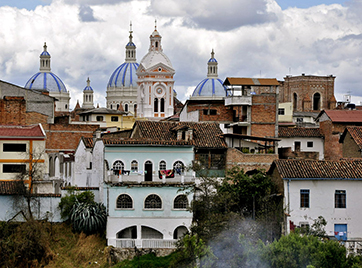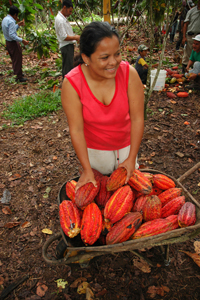Research Brief
The Rise and Fall in Income Inequality in Ecuador
During the 1990s, inequality in Ecuador increased because of a natural disaster and deep economic and financial crisis, as well as the impact of liberalization of the trade and financial sectors on labour markets
Falling income equality in Ecuador during the 2000s partly coincides with the rise to power of a ‘new leftist’ government in 2007, but the trend was already set early in the decade
The recent drop in inequality is mainly associated with a recovery from the country’s deep economic crisis, although the new leftist regime’s social transfer policies helped reduce inequality further
The lack of dynamic structural change in the economy make sustained reductions in labour income inequality unlikely over time
Ecuador experienced notable increases in income inequality during the 1990s, a development which by and large has been undone during the 2000s. Although active social transfer policies by successive governments played a role in reducing inequality, the rise and fall in inequality seem to have been associated for the most part with swings in macroeconomic conditions, not government policies.

The legacy of the 1990s
In the early 1990s, the trade and financial sectors were liberalized in Ecuador and high inflation was controlled through macroeconomic stabilization policies. On balance, there was a mild increase in inequality during the first half of the decade. The market reforms failed to induce strong employment growth in the formal sector, and those jobs that were created mainly benefited skilled workers. The slack in the labour market was absorbed in traditional agriculture and the informal urban sector. This increased the wage gap between formal and informal workers as well as between skilled and unskilled workers. However, lower inflation and aggregate real wage increases somewhat dampened the effect that this might have had on inequality.

The influences mitigating inequality disappeared in the second half of the 1990s, when the impact of the macroeconomic stabilization policies faded, and trade was liberalized. A series of external shocks, including heavy floods and falling oil prices, put the economy into a tailspin that ended in a full-blown banking and economic crisis in 1999. The economic downturn, increasing inflation, sharply falling real wages and accelerated exchange rate depreciation all pushed workers into unemployment and, in particular, into underemployment in informal sectors; this increased inequality. Amidst the crisis, large numbers of Ecuadorians started to leave the country.
The fall in inequality
The drop in income inequality during the 2000s was mainly due to the economic rebound following the deep crisis of the late 1990s. The recovery in education spending during the 1990s started paying off with more skilled workers entering the labour market. This trend was sustained with cash transfer programmes introduced at the end of the 1990s, which induced higher school retention rates. At the same time, demand for unskilled workers in urban informal services sectors and traditional agriculture outpaced that for other workers.
The cash transfer programme, which mainly benefits poor households, was enhanced substantially under the ‘new leftist’ government of Rafael Correa (2007-present), along with other social spending. Worker remittances also increased substantially during the 2000s as the large numbers of people who had left the country sent money home. Remittances initially mainly benefited higher-income groups, but favoured lower-income groups towards the end of the decade.
How lasting an effect?
The lack of dynamic structural change in the economy does not augur well for sustained reductions in labour income inequality. Continued increases in the supply of skilled workers may further decrease inequality, and enhanced social spending and quality improvements in social services may help counteract income inequality over the medium run, but this cannot last without a drive towards diversification into more skill-intensive activities to absorb a more educated labour force. Most structural factors continue to push towards greater inequality, especially the continued ‘informalization’ of the economy.
Inequality in Ecuador will not continue to fall without a drive towards diversification into more skill-intensive activities to absorb a more educated labour force
Structural transformation in the agricultural sector is particularly important if declines in inequality are to be sustained
There has also been a lack of structural change in the agricultural sector. Instead, the decline in rural inequality appears to be due to two factors: early in the 2000s the decline was due to the recovery from the natural disaster and the financial crisis; and in the second half of the decade, smallholder farmers gained from improved agricultural terms of trade and rising domestic food demand as well as the enhancement of the cash transfer programme. As a result, such declines are also unlikely to be sustainable.
 Join the network
Join the network